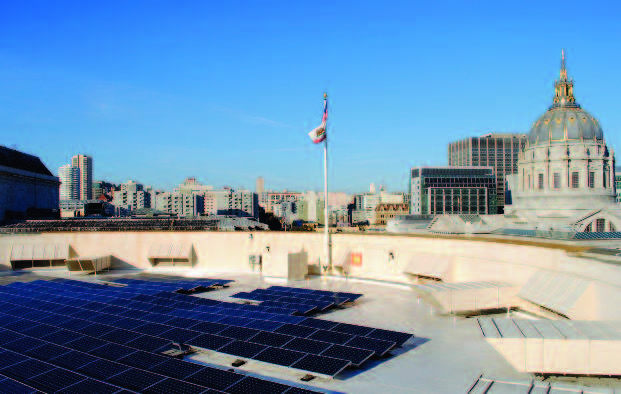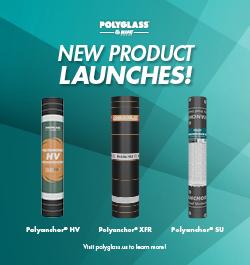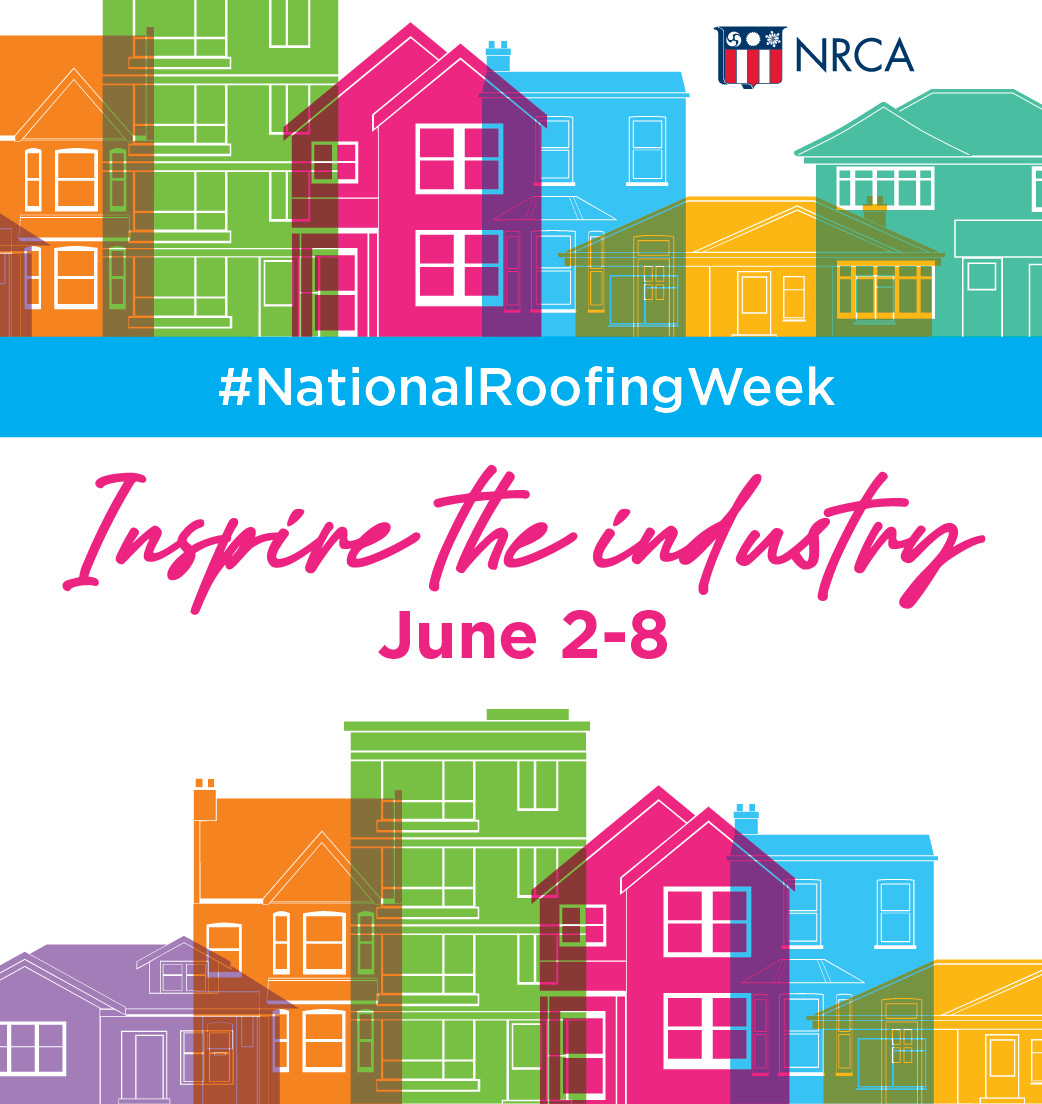A Revitalized Solar Roof for San Francisco’s Davies Symphony Hall

The new solar roof presented unique challenges including addressing insulation moisture issues and working around the symphony's busy rehearsal schedule.
In a perfect world, the architect designs a building and the contractor builds it, accurately and on time, with all the skilled labor necessary. In the real world, the supply of skilled construction labor ebbs and flows. Today it has ebbed. The scarcity of skilled labor drives up costs and drives down quality as crews rush from project to project in a quickening market.
San Francisco has long been known as a center for culture and the performing arts. Showcased by its War Memorial Opera House, considered the last Beaux Arts building constructed in the United States, this legacy continued with construction of the adjoining Louise M. Davies Symphony Hall.
Opened in 1980 and renovated in 1992, its modern design was a collaboration of architects and acoustical engineers working in concert to create an intimate environment to enhance the music of the San Francisco Symphony and the beauty of the structure itself.
Recently, the San Francisco Public Utilities Commission (SFPUC) determined that installing a photovoltaic (PV) solar system on Davies Symphony Hall would benefit the people of San Francisco. The SFPUC retained engineering consultant AEPC of San Ramon, CA to design the PV solar system for the 25,000 sq. ft. roof.
In addition to AEPC, the project team for the roof revitalization and PV solar system installation included Technical Roof Services (TRS) of Concord, CA and Fidelity Roof Company of Oakland, CA a Duro-Last® Certified Elite Contractor.
Moisture Issues Necessitated New Game Plan Initially, the installation of a rooftop solar energy system seemed to be straightforward. However, upon further inspection, significant moisture issues were discovered in the underlying roof insulation, contributing to deteriorating conditions in the 14-year-old tar and gravel roof.
To further assess the roof’s condition, AEPC brought in Technical Roof Services (TRS) to conduct a more thorough evaluation. According to Venk Mani of AEPC, “We knew the roof had some leaks and wanted to correct any problem areas before the solar panels were installed. Our goal was to ensure that the roof could last the life of the solar array, or a minimum of 25 years.” TRS’s Phillip Dregger added, “We were aware of leaks in the exterior concrete walls but there had to be another source of wetting. The wet insulation on the roof just didn’t follow any typical patterns.”
After conducting exhaustive tests, TRS and Dregger determined that there was substantial moisture leaking around the HVAC duct support posts that contributed to the saturation of the roof’s insulation.
It was clear that extensive repairs were needed, including replacing the 4,000 sq. ft. of wet insulation, to protect the longevity of the new roof system. One of Dregger’s primary considerations was the solar panel installation. “It’s relatively expensive to turn off and disconnect a solar array and to repair the roof. Therefore, the owner required the roof life to match the service life of the PV system. In other words, they needed a new roof.”
Presenting the Options to Ready Roof for PV Solar Dregger presented the two available options to the SFPUC: either tear off the current roof and install a new one, or overlay the existing roof with a new membrane. After careful consideration, the SFPUC opted to re-cover the existing roof since replacing the old roof with a new one would take longer and interfere with the symphony’s rehearsal and performance schedule.
After evaluating the available membrane alternatives, Dregger recommended a white 60 mil thick thermoplastic PVC roof system from Duro-Last Roofing, Inc. “Dealing with the dust, debris, odors and noise would be important considerations on this project,“ he explained. “The Duro-Last PVC roof membrane would be quicker to install. Additionally, we needed to mechanically attach the cover board and new roof membrane through the existing roof down to the concrete deck.”
Material Prefabrication Expedited Installation Prefabrication was another advantage of the Duro-Last Roofing System. The membrane was prefabricated into 22 foot wide rolls, reducing the application time and on-site welding. In addition the penetration flashings, parapet wall membrane, membrane curbs, solar hold down boots and other related roof materials were all custom fabricated at the factory. This not only assured installation accuracy at changes in plane on the roof, such as projections, curbs, drains, perimeters and abutting walls, but of equal importance was Fidelity Roof Company’s ability to expedite the installation process and meet critical deadlines.
Solar Ready The Duro-Last Roof System is ideal for PV or solar installations where the solar panel’s base goes through the waterproofing membrane. This is due to Duro-Last’s capability to custom fabricate flashings for almost any size penetration. Duro-Last Quality Assurance Technical Representatives then inspect every flashing upon project completion during the inspection process.
Fidelity Roof Company was awarded the contract for the project on July 11, 2013 and the real work began. The first step in the roof overlay process was to remove the existing gravel from the built-up roof as well as the wet roof and insulation areas. Once cleared, Phil Dregger’s design called for a half-inch, high-density gypsum cover board supplied by Duro-Last to be mechanically fastened through the existing roof and insulation, to the concrete deck which provided a smooth surface for the fully adhered 60 mil Duro-Last overlay membrane. This process assured the roof met wind uplift as well as seismic design requirements.
Working Around Rehearsals and the Streets of San Francisco Scheduling commitments at a busy location in the center of San Francisco meant that the materials and equipment needed for the Davies Symphony Hall job could only be delivered and crane-loaded onto the roof top on weekends. Work schedules were adjusted to meet the symphony’s pre-established rehearsal and performance requirements. This meant sometimes working late into the evenings and weekends to meet the scheduled completion. These were not new challenges to Fidelity and project manager Brian Swanson. “We had a job to do and were committed to making sure that the schedule worked for everybody involved.”
AEPC’s Venik Mani echoed this confidence: “We’ve worked with Fidelity on previous projects and had confidence in their ability to complete the job with speed and quality. We encountered a few issues during the project, all handled quickly, efficiently and professionally to the satisfaction of both the SFPUC and the San Francisco Symphony.”
Swanson went on, “We focused on working cohesively as a team. This included Fidelity’s superintendent, foreman and crew along with representatives from Duro-Last Roofing, TRS, AEPC, the SFPUC and Davies Hall management. The job received a fair amount of scrutiny. It was a real credit to teamwork that everything went so smoothly.”
The Louise M. Davies Symphony Hall roof project was completed in August 2013.The solar work began in November and the system was commissioned in December 2013.
About Duro-Last®, Inc. Known as the “World’s Best Roof®”, Duro-Last, Inc. is the world's largest manufacturer of custom prefabricated, thermoplastic single-ply roofing systems. Factory controlled custom prefabrication eliminates up to 85% of field seams, resulting in lower on-site labor costs and easier installation.
This highly sustainable and extremely durable roofing system is leak-proof, virtually maintenance free and resistant to chemicals, fire, punctures, and high winds. Over two billion square feet of Duro-Last membrane has been installed throughout North America. Duro-Last is headquartered in Saginaw, Michigan with additional manufacturing facilities in Grants Pass, Oregon; Jackson, Mississippi; Sigourney, Iowa, and Carrollton, Texas.
Save








-2.png)








Comments
Leave a Reply
Have an account? Login to leave a comment!
Sign In